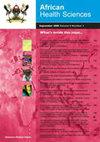Effects of metabolic syndrome on bone mineral density in postmenopausal Turkish women
IF 0.9
4区 医学
Q3 MEDICINE, GENERAL & INTERNAL
引用次数: 0
Abstract
Objective: In this study, we aimed to determine the potential effects of metabolic syndrome (MetS) and its components on bone mineral density (BMD) in the lumbar spine and femoral neck in postmenopausal Turkish women. Patients and methods: 193 postmenopausal women were included in this study. Anthropometric measurements, biochemical blood tests, and T-scores of BMD in the lumbar spine (L1–L4) and femoral neck were recorded. The participants were divided into two groups according to the bone mineral density (BMD) results as osteoporosis group (Group 1, n=109) who had a T-score>−2.5 at the spine or/and femoral neck, and the control group (Group 2, n=84) who had T-score>−2.5 at the spine or/and femoral neck. MetS and its components were screened using the criteria of the Adult Treatment Panel III (ATP III) and National Cholesterol Education Program (NCEP). The effects of the MetS components on T-scores of BMD at the femoral neck and lumbar spine were evaluated by partial correlation test and multiple regression analysis. Results: MetS was detected in 58 (30.1%) participants. The prevalence of MetS was significantly higher in Group 2 compared to Group 1 (39.3% vs 22.9%, p=0,014). Among the MetS components, especially abdominal obesity showed a significant positive correlation with T-scores of BMD at the femoral neck and spine. A weak but significant correlation was also observed with systolic and diastolic blood pressure, serum triglyceride levels, and fasting blood glucose (FBG). Multiple regression analysis revealed an association between waist circumference and BMD at both femoral neck and spine, and also between serum triglycerides, systolic and diastolic blood pressure, and spine BMD. Conclusion: Our findings support that MetS is associated with increased BMD at the femoral neck and spine in postmenopausal women. A significant positive association was observed among the MetS components, especially with abdominal obesity, and also a weak positive association with serum triglycerides, and systolic and diastolic blood pressure. Keywords: Postmenopausal women; bone mineral density; metabolic syndrome; osteoporosis.代谢综合征对绝经后土耳其妇女骨密度的影响
目的:在本研究中,我们旨在确定代谢综合征(MetS)及其组成部分对绝经后土耳其妇女腰椎和股骨颈骨矿物质密度(BMD)的潜在影响。患者和方法:193名绝经后妇女纳入本研究。记录人体测量、血液生化测试、腰椎(L1-L4)和股骨颈的骨密度t评分。根据骨密度(BMD)结果将参与者分为两组,骨质疏松组(1组,n=109)脊柱或/和股骨颈t评分为- 2.5,对照组(2组,n=84)脊柱或/和股骨颈t评分为- 2.5。使用成人治疗小组III (ATP III)和国家胆固醇教育计划(NCEP)的标准筛选MetS及其组成部分。通过偏相关检验和多元回归分析评价MetS成分对股骨颈和腰椎骨密度t评分的影响。
结果:58名(30.1%)参与者检测到MetS。与1组相比,2组的MetS患病率明显更高(39.3% vs 22.9%, p= 0.014)。在MetS组成部分中,尤其是腹部肥胖与股骨颈和脊柱的BMD t评分呈显著正相关。与收缩压和舒张压、血清甘油三酯水平和空腹血糖(FBG)也存在微弱但显著的相关性。多元回归分析显示,腰围与股骨颈和脊柱的骨密度之间存在相关性,血清甘油三酯、收缩压和舒张压与脊柱骨密度之间也存在相关性。结论:我们的研究结果支持MetS与绝经后妇女股骨颈和脊柱骨密度增加有关。代谢当量各组成部分之间存在显著正相关,尤其是与腹部肥胖之间,与血清甘油三酯、收缩压和舒张压之间也存在微弱正相关。
关键词:绝经后妇女;骨密度;代谢综合征;骨质疏松症。
本文章由计算机程序翻译,如有差异,请以英文原文为准。
求助全文
约1分钟内获得全文
求助全文
来源期刊

African Health Sciences
MEDICINE, GENERAL & INTERNAL-
CiteScore
2.30
自引率
0.00%
发文量
179
审稿时长
>12 weeks
期刊介绍:
The African Health Sciences is an internationally refereed journal publishing original articles on research, clinical practice, public health, policy, planning, implementation and evaluation, in the health and related sciences relevant to Africa and the tropics. Its objectives are to: Advocate for and promote the growth of reading culture in sub Saharan Africa; Provide a high quality journal in which health and policy and other researchers and practitioners in the region can and world wide, can publish their work; Promote relevant health system research and publication in the region including alternative means of health care financing, the burden of and solution of health problems in marginalized urban and rural communities amongst the displaced and others affected by conflict; Promote research and the systematic collection and collation and publication of data on diseases and conditions of equity and influence; Promote development of evidence-based policies and guidelines for clinical, public health and other practitioners. African Health Sciences acknowledges support provided by the African Health Journals Partnership Project that is funded by the US National Institutes of Health (through the National Library of Medicine and the Fogarty International Center) and facilitated by the Council of Science Editors.
 求助内容:
求助内容: 应助结果提醒方式:
应助结果提醒方式:


